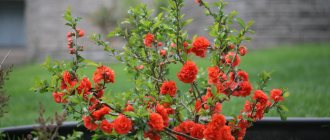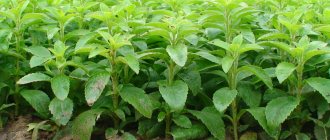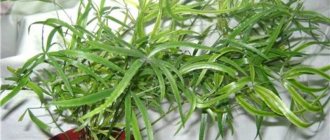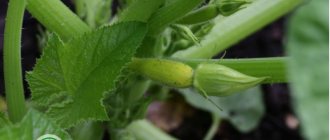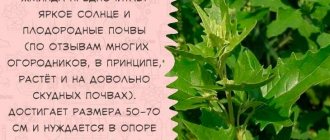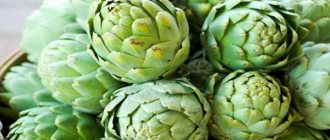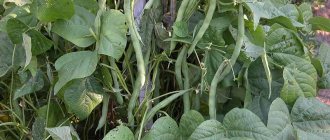Despite the fact that more than 50 species of the gravilat plant grow in nature, only 20 are cultivated for gardening. The flower grows on the banks of rivers or lakes, as well as in meadows. In garden plots and flower beds, gravilate is used as a decorative decoration for lawns, various rock gardens, and artificial ponds in country plots.
How to care for gravel in open ground
Gravilat is planted in sunny areas, near water bodies. The plant tolerates partial shade and light short-term drought. However, it still prefers regular, abundant watering.
The main maintenance requirements are loosening the soil, weeding, sufficient watering and fertilizing. It is advisable to feed at least two or three times per season with organic or complex mineral fertilizers. Thanks to this attention, gravilate will delight you with luxurious flowering and bright, thick leaves.
How to plant correctly
Gravilat prefers well-lit, sunny areas without drafts, protected from the wind. The soil on the designated lawn should be very light with excellent water permeability. You should choose areas with low acid soil.
The landing site must be properly prepared:
- First, you need to thoroughly loosen the soil.
- Secondly, sand is added to the top layer, which will act as drainage. You also need to add wood ash to the soil to reduce the acidity level to the desired degree.
- Thirdly, the addition of peat and humus will help saturate the soil with complex nutritional components.
The soil on a personal plot does not always meet these requirements. In this case, you will have to work hard. For example, when the soil is too wet, it is advisable to plant a river type of gravel. You can also carry out drainage work and raise the flower bed.
The distance between the planted bushes must be at least 20 cm. Then the planted plants must be watered and mulched.
Growing gravilate from seeds at home
Gravilat seeds photo Gravilat from seeds
Gravilat seeds can be planted on seedlings or directly in the ground, in spring or autumn. Let's take a closer look at each of the options.
Growing gravilat seedlings
When to plant gravilat for seedlings? They start sowing in early March, trying not to delay, but you can plant until the beginning of April.
- Prepare seedling boxes or containers with mandatory drainage holes in the bottom.
- Fill with loose nutrient soil. You can use soil from the store for flowering plants.
- Make shallow grooves, up to 1-2 cm, place seeds in them at a distance of 3-4 cm. The distance between the rows is 4-5 cm. Cover the seeds with soil.
- You can scatter the seeds on the surface of the ground, press them with your palm and lightly sprinkle the soil on top.
- Moisturize moderately, using a spray bottle.
- To speed up germination, you can cover the container with the seeds with a plastic bag.
- When shoots appear, the bag is removed.
How to sow gravilat seeds at home Photos of seedlings
- As soon as the seedlings produce two or three true leaves, they are carefully dived into separate cups with a diameter of about 7 cm. Help yourself with any sharp object (fork, toothpick, the back of a teaspoon) to pry up the seedling along with the root and a lump of earth. This way you can replant the plants painlessly and they will hurt less.
- 10 days after picking, feed the seedlings with complex fertilizer for flowering plants to stimulate growth.
Gravilata seedlings photo
Details
Medicinal properties of gravilate and use in folk medicine
Officially, this plant is not recognized as a medicinal crop, but two types are widely used in traditional medicine - river and urban gravilate. A medicinal decoction is prepared from dried and crushed roots. In this case, take 1 spoon of the finished product and pour boiling water over it, then simmer for 15 minutes in a water bath.
Interesting! For treatment, it is enough to take only 1-2 dessert spoons per day. When used externally, it helps get rid of gum problems and accelerates the healing of skin lesions.
River gravel grows in coastal areas with moist soil. The essential oil of this variety has a strong antimicrobial effect; a decoction based on it is used to gargle for problems with the oral cavity and sore throats. Fresh pulp from the roots can be used to heal calluses.
Planting gravel in open ground and methods of propagation
Despite the fact that caring for and growing gravel has some peculiarities, the basic steps will not cause difficulties even for novice gardeners. The plant reproduces in only two ways - by dividing the bush and by seeds.
Transplantation and division are carried out in spring or autumn. Terry gravilate has its own planting characteristics, and in terms of time it is only early spring, from the moment the soil warms up. The terry species will have time to adapt over the summer and successfully overwinter
These planting conditions apply, in principle, to all hybrid varieties, which require more time for adaptation and sometimes a little shelter for the winter for young seedlings.
Planting is done in open and well-lit areas. To do this, it is not necessary to ensure high soil fertility, but it is important to exclude high soil moisture and a strong acid reaction.
In low-lying areas, planting requires the construction of a drainage system or a high flower bed with good drainage. Before planting, the soil must be dug up to ensure breathability. Sand can be used as drainage, and ash can be added to increase the alkaline reaction.
Interesting! Soil from greenhouses and compost can be added to the formed holes for planting; in the presence of high acidity, dolomite flour is added, and every spring the tree trunk circle is dug up with the addition of wood ash.
Low-growing varieties of gravel are successfully used to decorate rock gardens located in a sunny area. If the soil there is too wet, it is better to use one of the varieties of river gravel, which more easily adapts to such conditions.
Gravilat seed propagation
For sowing, seeds are purchased in special stores, which can guarantee a high percentage of germination and varietal identity. Initially, planting is done in a greenhouse or in containers filled with soil. It must be diluted with sand and ash and have sufficient friability.
To achieve the best germination, it is necessary to carry out two-week stratification in cool conditions, but at above-zero temperatures up to +7 degrees. Germination occurs in a bright and warm room, and from the moment 2-3 true leaves appear, seedlings can be planted in open ground at a distance of 15 cm.
All types of gravilate, except river gravilate, react poorly to high soil moisture. This must be taken into account when planting. Despite the fact that the plant is characterized by intensive growth, the flowering period after propagation from seeds begins only a year after planting.
Interesting! To sow seeds directly into an open area or flowerbed, the soil must be dug up and drainage organized. This method of reproduction is possible only in warm regions when the temperature is stable at night.
Dividing gravilata bushes
You can divide the plant's mother course in the fall, when the flowering period ends, or with the arrival of spring, before the buds appear.
For this:
- an adult specimen is carefully removed from the ground along with roots and a small lump of earth;
- the cuttings, together with part of the root system, are separated using a sharp and sterilized instrument;
- sections must be treated with any fungicidal preparation;
- The resulting parts of the plant are planted in a moist area in holes slightly larger than the resulting root system, maintaining a distance of 20 cm.
After planting, gravilat does not require special care, and it is enough to monitor watering and looseness of the soil.
How to properly grow gravilat in open ground
Regardless of the variety, gravilat is a very unpretentious plant, but to ensure a decorative appearance and lush flowering, it is necessary to follow certain conditions.
Watering
Almost all varieties of gravilat grow well in moderately moist soil. If there are normal weather conditions, watering once every 7 days is sufficient. If there is intense heat and lack of precipitation for a long time, the soil must be moistened twice a week. Watering is done at the root, after which it is necessary to slightly loosen the soil and remove weeds.
Fertilizers
The gravilate flower responds well to the high-quality mineral composition of the soil, for which complex fertilizers and organic matter are used during planting. In this case, compost, peat, and manure solution are used. After applying any fertilizer, especially in dry form, the soil must be additionally moistened
Important! If planting was done in unfertilized soil, the mineral complex must be added at the beginning of next spring, adding phosphorus, potassium and nitrogen. The second time fertilizer will be required during flowering. To prolong it and make it abundant, potassium and phosphorus are added.
Transplanting a plant
Gravilat reacts very poorly to a change of place of residence, but in any case, it must be replanted every 4 years. This promotes renewal of the root system and the formation of an abundant number of buds.
Unscheduled replanting of creeping grass, meadow, field and other varieties is necessary only in cases where the root system is affected by rot. Then the plant is dug up and the rotten roots are removed. After this, it is necessary to treat both the plant itself and the soil in which it grows.
Preparing for winter
Gravilat is a herbaceous crop that is intended for cultivation in open ground and is characterized by high frost-resistant qualities. There are varieties of this plant that can winter at temperatures of -35 degrees. There is no need to cover plants for the winter, because even if parts of the bush are damaged, they are restored very quickly with the onset of warm weather
Interesting! When planting gravilat on your site, you need to inquire about the varietal characteristics of the plant, because some of them do not withstand winter frosts so well. If you have the slightest doubt, it is better to cover the bushes for the winter using spruce branches and mulching material.
How to plant gravilat seedlings in the ground
Gravilat seedlings are planted in the ground from mid-May to early June, provided there are no night frosts. Two weeks before planting, the seedlings are hardened off by leaving them outside, starting from several hours a day, and increasing the stay time to a full day. In this case, planting will be painless, the plants will quickly take root and begin to grow.
Plants grown from seeds will bloom only in the next season, in the month of July. They are planted at a distance of 40 cm from each other.
Decorative benefits
The gravilate flower is perfect for decorative decoration of ridges and alpine slides. The flower is also used in group plantings on lawns. Combining several varieties of plants in a flowerbed will help lengthen the flowering process of the entire flower garden from May to October.
Tall plant varieties are used to decorate bouquets. In the garden, gravilat looks great in a composition with bells, carnations, phlox and peonies.
How to sow gravilat seeds in the ground
in spring
Spring sowing begins as early as possible, as soon as the soil ripens. They loosen the bed, dug up since the fall, and level the ground with a rake. Make rows at a distance of 15-20 cm, sow the seeds shallowly, up to 2 cm, level the ground with the back of the rake.
It is advisable to predict the weather before the rain, then you won’t have to water. If the weather is dry, the bed is moistened with a watering can, but not flooded, so as not to create an earthen crust. It is better to water a little every evening than to water occasionally.
When the shoots appear, the bed is weeded to remove weeds and the gravel itself is thinned out, leaving at least 5 cm between plants. When the seedlings rise to 10-15 cm, they are transplanted to a permanent place. The distance between the bushes is 40 cm.
in autumn
The timing of sowing will depend on the region, the main thing is that after sowing there is no prolonged heat, which is why the seeds may sprout in the fall. Gravilat is usually sown before winter around October, when it is already quite cold. The bed should not be specially insulated: the seeds will not freeze, and natural stratification will benefit them, and the plants will sprout together in early spring.
Spread of gravilate
The plant prefers areas with temperate and subtropical climates and grows in both hemispheres. There are 11 species found in Russia, and there are also hybrid forms. The most common varieties you can find are riverine, Aleppo, urban and large-leaved.
Culture loves to settle on the edges of the forest. Distributed almost everywhere.
Regions of distribution on the map of Russia
Reproduction of gravilat by dividing the bush
The gravilata bush can be divided if it has grown well. This is done in spring or autumn. The plant is completely dug up and cut into several parts with a sharp knife, with at least two or three growing points.
The cuttings are planted in pre-prepared holes, trying to maintain the same level of the root collar. It is advisable to place a couple of handfuls of humus at the bottom of the hole; this will give the plant a good charge for several years.
When planted in spring, plants can bloom the same year, you just need to try to divide the bush as early as possible so that the gravilate has time to take root before the flowering season.
Care
All species are unpretentious; even beginners can cope with plant care. It is important to remember that gravilat is a light-loving flower that does not tolerate drought well. At the same time, stagnation of moisture at the roots is extremely undesirable. You cannot plant gravilat in swampy areas.
Watering
Irrigation of plantings should be moderate as the soil dries. It is not recommended to allow the soil to dry out or become overly moist. Watering is carried out at the root.
Trimming inflorescences and flower stalks
To maintain the decorative appearance of plants, it is recommended to carry out preventive pruning of dried leaves, inflorescences and flowering stems. It is necessary to remove plant debris in a timely manner to avoid the occurrence of fungal diseases.
Loosening and weeding
Loosen the plantings as necessary, removing all weeds. After weeding and loosening, the bushes are mulched with a mixture of peat and sand. It must be remembered that the root system of gravilate is superficial; the perennial can be loosened to a depth of no more than 2-3 centimeters.
Top dressing
Gravilat can do without fertilizing. But if it is necessary to activate growth or stimulate flowering, fertilizing with complex mineral fertilizers is used. To improve the color of the leaves, use one-time fertilizing with manure or humus.
Diseases and pests
The herbaceous shrub is a natural insecticide, that is, it is able to repel pests and insects with its specific smell; in addition, the leaves and stems of the plants are covered with small villi, which makes the bush inedible for caterpillars and slugs.
Gravilate is not prone to fungal and bacterial infections, tolerates temperature changes well and reacts neutrally to poor soils.
What flowers to plant gravilat with? Beautiful combinations and popular companions
Gravilat in landscape design Beautiful combinations with flowers photo
Gravilat goes well with irises, lupine, forget-me-nots, nemophila, cereals, tiarellas, peonies, phlox, goldenrod, buzulnik, bluebells, eschscholzia, and herbal carnation.
Gravilat photo on a flowerbed with other flowers
The chaotic plantings of these plants against the background of decorative stones look beautiful. You can plant low ground covers nearby, such as periwinkle or tenacious, arabis, bidens.
Why is it worth planting this plant?
Bright, fairly large flowers, thick, bright green foliage will simply never go unnoticed. It is best if the gravilate grows next to flowers with bright colors. This is perfect for decorating a garden path, and can also grow next to an artificial pond. If your bushes are tall enough, then its flowers are perfect for decorating your bouquet, and another advantage of this plant is that when you cut it, put it in a vase and it will stay fresh for a very long time. If you want this plant for your plots, you definitely won’t regret it, and if you spend a little time and effort, it will grow to your delight and the envy of your neighbors.
Types of gravilate with description and photo
Hybrid gravilate Geum x hybridum
Gravilat hybrid variety Geum x Princes Juliana
Beloved by gardeners, the hybrid gravilate has absorbed the best features of its parents, the wild forms: Chilean and bright red. Lush double flowers and powerful, beautiful stems will be a magnificent decoration for any corner of the garden, flower bed or pond.
Gravilat terry variety Geum Queen of Orange photo
Popular varieties:
- 'Fire Opal' - orange-red double flowers;
- 'Princess Juliana' - orange-yellow inflorescences;
- 'Gladys Perry' - scarlet flowers.
Mountain gravilate Geum montanum
Mountain gravilate Geum montanum photo
Widely distributed in the mountains of Europe. A low perennial reaches a maximum of 30 cm in height. Small flowers up to 2.5 cm are cup-shaped and yellow in color. Tolerates severe frosts, prefers sunny areas.
River gravel or rivulet Geum rivale
River gravity Geum rivale Flames of Passion photo
River gravilate grows near rivers and reservoirs almost everywhere: in the European part of Russia, Asia Minor, the Caucasus, Western and Eastern Siberia. The plant reaches a height of about 70 cm, and over many years of life it grows a powerful rhizome. The stems are erect and dark red. Flowering occurs in the month of May; the flowers are small, inconspicuous, and pale pink. This is a good honey plant, loved by bees for the abundance of sweet nectar. Reproduction occurs exclusively by seed.
The seed fruits have tenacious hooks, thanks to which they cling to animal fur and spread far from the mother plants. The seeds germinate next spring. In the first year the bush is very small, only a few leaves at the rosette. The first leaves die off by autumn, being replaced by rounded leaves that overwinter under the snow until spring. And only after a year the plant begins to bloom.
Due to its rustic appearance, the plant is rarely planted in gardens; only two varieties are preferred:
- Lionel Cox - yellow flowers.
- Album - white flowers
Ross Gravilat Geum rossii
Gravilat Ross Geum rossii photo
It was brought to Europe from North America, where it grows widely in the Arctic tundra, as well as on rocky areas and meadows. The perennial forms a continuous dense carpet 30 cm high, covering the clearings with bright yellow clouds of flowers during flowering. Blooms in summer. Prefers soil without stagnant water and has high winter hardiness.
Geum triflorum
Geum triflorum photo
Gravilatum triflorum originated from moist, damp places along rivers in the vastness of North America. Only 30 cm tall, very hardy and winter-hardy. It blooms with either yellow-scarlet or lemon-purple flowers.
Gravilat Chilean Geum quellyon
Chilean gravilate in landscape design photo of an alpine slide
As the name suggests, it was imported from Chile, South America. The height of the plant is decent, up to 60 cm. The leaves are collected in a basal rosette. It begins to bloom in June and produces flowers for about 50 days.
Terry varieties of gravilata are especially loved by flower growers:
- Lady Stratheden - yellow flowers;
- Mr J. Bradyshaw' - 60cm tall, double orange flowers, blooms in July, continues to bloom for approximately 30 days.
- Fireball is only half a meter high, luxurious lush flowers of bright orange color, flowering lasts 50 days.
- Goldball - yellow flowers.
Bright red or red-flowered Geum coccineum
Terry gravylate bright red variety Geum 'Mrs Bradshaw' photo
Found in Asia Minor, the Caucasus, and Greece. The perennial has pubescent stems topped with large bright red flowers. The leaves are tripartite.
A unique winter-hardy variety with long flowering from June to September is popular: the flower is called “Borizin”.
Use in landscape design
Gravilat is an indispensable attribute of rocky gardens and rock gardens. Types of river gravel are planted to decorate the coastlines of ornamental reservoirs. Plants look harmonious in joint plantings with peonies, phlox, lilies and irises.
Hybrid varieties are used in border plantings. The flowering stems of tall gravilata are used to create flower arrangements and bouquets.
Using gravilate
This plant is often used by landscape designers and gardeners to decorate their plots and create alpine slides. Gravilat root has the ability to hold soil. Due to its light aroma with notes of cloves, gravilate has found use in aromatizing medicinal tinctures.
The root is sometimes used to tan leather and dye fabrics brown and gold. The leaves and roots are also used for culinary purposes.
If medicinal types of gravilate grow along the sides of busy highways, they cannot be used. Plants quickly accumulate heavy metals and become toxic.
The grass stems serve as an additive to livestock feed.
Diseases and pests
Gravilat is resistant to pests, but can be affected by spider mites. This can be caused by moisture deficiency. To combat the pest, plants use acaricides - Aktara, Aktellik, Iskra, Fitoverm, Fufanon.
Spider mites feed on plant sap, causing leaves to dry out and die
Perennials may suffer from rot. In case of severe damage, the plants are destroyed by the roots. To treat perennials, fungicides such as Fundazol, Skor, Impact, Quadris, and Topaz are used.
Rot can be caused by overwatering plants. This problem can be prevented by mulching.


